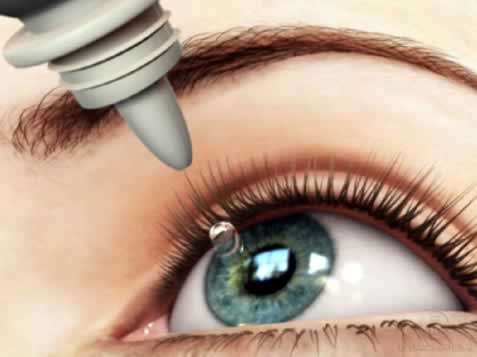Ocular Surface Disorder
ARE YOUR EYES DRY, BURNING, IRRITATED, GRITTY OR WATERY?
If the answer to any of the above is ‘YES’, you might be suffering from ocular surface disorder. What causes the above symptoms?
1. Aging
 Elderly individuals frequently complain of dryness of the eyes. It is caused by a reduction in tear production as well as an alteration of the chemical and physical characteristics of the tear secretion, which is analogous to the changes that take place in all mucous membranes with age. Men and women of any age can be affected. However, after menopause and during pregnancy, women are especially susceptible.
Elderly individuals frequently complain of dryness of the eyes. It is caused by a reduction in tear production as well as an alteration of the chemical and physical characteristics of the tear secretion, which is analogous to the changes that take place in all mucous membranes with age. Men and women of any age can be affected. However, after menopause and during pregnancy, women are especially susceptible.
2. Contact lenses
Wearing contact lenses often increases tear evaporation. This can result in irritation, increased protein deposits, infection, and pain. Dry eye has been shown to be the leading cause of contact lens discomfort.
3. Medications
A variety of common medications reduce tear secretion. These include decongestants, antihistamines, diuretics, blood pressure tablets, beta-blockers, sleeping pills, antidepressants, pain relievers and alcohol.
4. Environment
Occasional or continuous exposure to various environments can reduce eye lubrication. These include sunny, dry or windy conditions; areas with heaters, dehumidifiers, fans or air conditioners; high altitudes, smoke or air pollution and sand, dust or airborne pollen.
5. Auto immune disease
Auto Immune Disease can be accompanied by a dry mouth and dry eyes. This combination of symptoms is called Sjogren’s Syndrome.
6. A lack of tears, improper lubrication or tears draining too quickly from the eye result in a condition known as Dry Eye.
Dry Eye can be treated using artificial tears.
7.Artificial Tears
Dry Eye has traditionally been treated with over the counter artificial tears. These are eye drops that are used to help supply additional fluids minerals and lubricating minerals that are found in normal tears. When used properly, artificial tears are safe and accessible and effective treatment for dry eyes. They are designed to soothe irritation and relieve the symptoms of dry eyes and help protect the eye against further irritation. Artificial tearing may also be used in conjunction with other treatments for dry eye. With severe dry eyes you have the option to use tear plugs.
8. Punctual Plugs/Tear Plugs
One treatment for dry eyes is to preserve the tears that the eye already has. This can be done by blocking the tear drainage ducts using a punctual plug. Punctual plugs which can be temporary or permanent are painlessly inserted into the tear ducts in an eye doctors’ office, and are not normally felt once inserted. Blocking the tear ducts prevents the tears from draining away from the eye quickly. When used with other dry eye treatments the eye remains moist and protected by the tears for a greater length of time. By retaining tears, punctual plugs help to reduce dryness and can lessen the symptoms of dry eye.